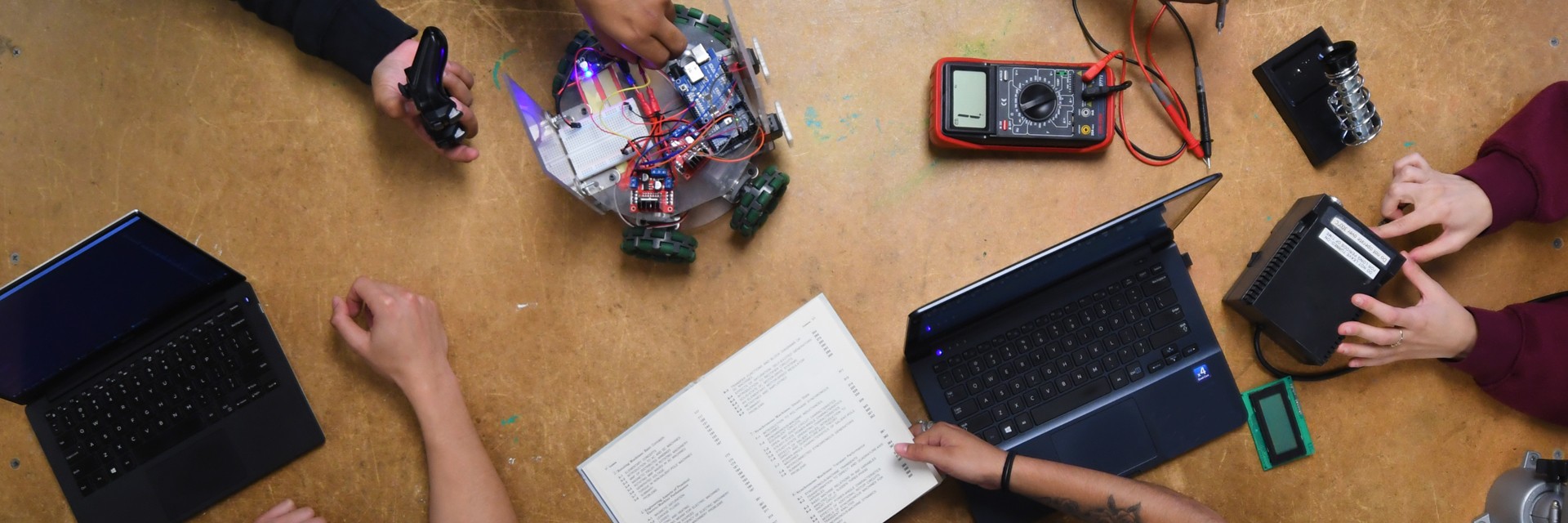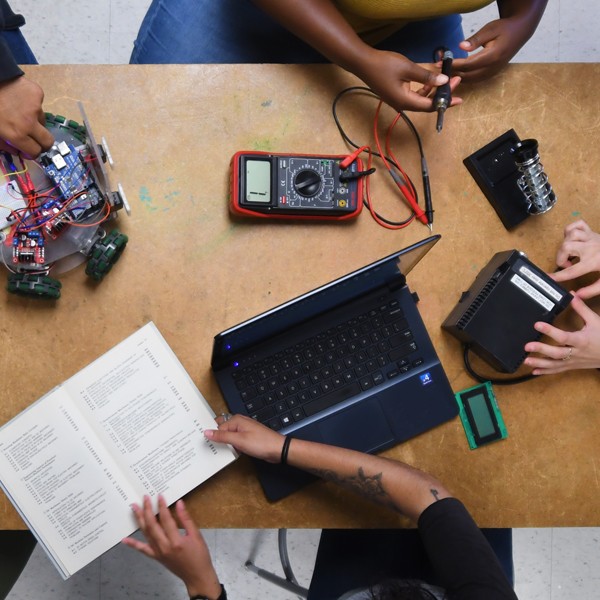Dr. Mohsen Eshraghi (project PI), with Dr. Chris Bachman and Dr. Doug Hofmann from JPL (co-PIs), proposal titled: "Additive Manufacturing on the Moon: Exploring the Potential of Laser Wire Directed Energy Deposition for Metallic Component Fabrication" has been selected to receive funding from NASA's MUREP Space Technology Artemis Research (M-STAR) program. This team will receive $900k for three years to pursue our research, educational, and outreach activities on Metal 3D Printing for potential implementation on the Moon!
The proposal aims at building NASA's capability for improving metal 3D printing technologies on the Moon through a collaborative effort between Cal State LA and NASA JPL.
The proposed work will utilize experiments and simulations to advance our understanding of lunar manufacturing, contribute to developing a sustainable lunar economy, and work towards a thriving and diverse manufacturing workforce.
NASA Awards $14 Million to Universities for Supportive STEM Efforts
Part of that effort includes the MUREP Curriculum Awards, which are being managed by NASA’s Jet Propulsion Laboratory.
Article: JPL News
NASA is investing more than $14 million in 19 U.S. colleges and universities to grow their STEM capacity to participate in critical spaceflight research and prepare a new generation of diverse students for careers in the nation’s science, technology, engineering, and math workforce.
“These awards help NASA reach students and institutions that traditionally have had fewer opportunities in cutting-edge spaceflight research,” said Shahra Lambert, NASA’s senior advisor for engagement. “We want the Artemis Generation to feel excited and prepared to join us in tackling the scientific and technological challenges of space exploration.”
The new MUREP (Minority University Research and Education Project) Curriculum Award was established this year to help Minority-Serving Institutions strengthen their STEM academic offerings.
“Current research shows that developing new curricular pathways or adding to an existing STEM curriculum can help these colleges and universities attract more diverse groups of students to the kinds of research that align with NASA’s needs,” said Torry Johnson, the project’s manager.
NASA awarded five institutions a total of nearly $6 million to implement their curriculum-boosting projects. The selected institutions and their proposed projects are:
- Passaic County Community College, Paterson, New Jersey
PCCC Urban Climate Change Initiative - Prince George’s Community College, Upper Marlboro, Maryland
Establishing STEM Majors at Prince George’s Community College - University of Nevada, Las Vegas
Enhancing IDEAS at a Minority- and Hispanic-Serving Institution through research and education for underserved students in partnership with NASA - The University of Texas Rio Grande Valley, Edinburg, Texas
Remote-sensing and Analytics for Integrating Science Education with NASA SMD to Strengthen Student Research Capacity at MSI (RAISE) - University of the District of Columbia, Washington
Developing NASA-infused Curriculum and Experiential Research for Student Success in Space Technology
The MUREP Space Technology Artemis Research opportunity supports NASA’s Space Technology Mission Directorate (STMD) by fostering and increasing MSI participation in research and technology development concepts that align with the agency’s needs for upcoming Artemis missions to the Moon. The agency chose nine institutions, awarding a total of more than $8 million to carry out their projects.
“When we return humans to the Moon, it will be thanks to the creativity and dedication of researchers across the nation,” said Walt Engelund, deputy associate administrator for programs in STMD. “We’re proud to partner with OSTEM to foster the future of technology development and create opportunities for these institutions to contribute to NASA’s Artemis missions.”
The selected institutions and their proposed projects are:
- Cal Poly Pomona Foundation, Pomona, California
CubeSat Technology Exploration Program (CubeSTEP) - California State University, Los Angeles
Additive Manufacturing on the Moon: Exploring the Potential of Laser Wire Directed Energy Deposition for Metallic Component Fabrication - Cankdeska Cikana Community College, Fort Totten, North Dakota
The Research and Development of Extravehicular Activity Gait Assist Device - Delaware State University, Dover
Constraining Exospheric Water Using Mid-IR Sensing and LIBS for Lunar Rover Missions - College of the Desert, Palm Desert, California
A Penetrolyzer for Extracting Oxygen and Hydrogen from Mars Regolith - Morgan State University, Baltimore
Muscular Atrophy Effects of Long Duration Human Exploration Mission on Vocal Fold Adduction for Airway Protection - University of Maryland Eastern Shore, Princess Anne
DREAM: Developing Robotic Exploration with Agrobots and Moonbots - University of North Texas, Denton
Protective Thermal Electro-Chromic Coatings (ProTECC) for Lunar Exploration - The University of Texas at Arlington
Rotating Detonation Rocket Engines for In-Space Propulsion: Integrating Technology Development with STEM Engagement
The International Space Station Flight Opportunity provides a ride to low Earth orbit for mature, flight-ready research projects that align with NASA’s science and technology priorities. This opportunity entails cooperation with NASA’s International Space Station Research Office, mission directorates, and field centers.
“These awards offer researchers a valuable opportunity to leverage the unique microgravity environment of the International Space Station as a platform or testbed, allowing them to conduct authentic spaceflight demonstrations based on their preliminary ground-based research,” said Dr. Kathleen Loftin, EPSCoR (Established Program to Stimulate Competitive Research) project manager. “By utilizing the space station as a proving ground, we accelerate the readiness of these technologies, bringing them one step closer to practical implementation.”
NASA selected five institutions to receive $100,000 each – $500,000, total – to complete their projects. These institutions and their proposed projects are:
- University of Delaware, Newark
Impact of Temperature Cycles and Outgassing on the Fiber-packaged Silicon Photonic Transceivers - University of North Dakota, Grand Forks
Effect of Microgravity and Higher Radiation on Healing and Metastasis Potential of Omentum – ISS Flight Opportunity - Nevada System of Higher Education
A Compact, Non-invasive, and Efficient Vision Screening System for Long-term Spaceflight Missions - University of Kentucky, Lexington
KRUPS: ISS Flight for Telemetry and Recovery - Oklahoma State University, Stillwater
Effect of Synergistic Space Effects on Properties of Novel Polymer Composite Materials
The awards are made possible through NASA’s Office of STEM Engagement and funded by MUREP, which provides resources and activities to support underserved students from K-12 through higher education, and EPSCoR, which partners with government, academia, and industry to improve research infrastructure in select U.S. jurisdictions.
Both MUREP awards were made through the annual Engagement Opportunities in NASA STEM FY 2023 solicitation. The EPSCoR ISS Flight Opportunity Award is also an annual solicitation. All the awards listed above have a three-year period of performance.
For more information about NASA STEM, visit: https://stem.nasa.gov

